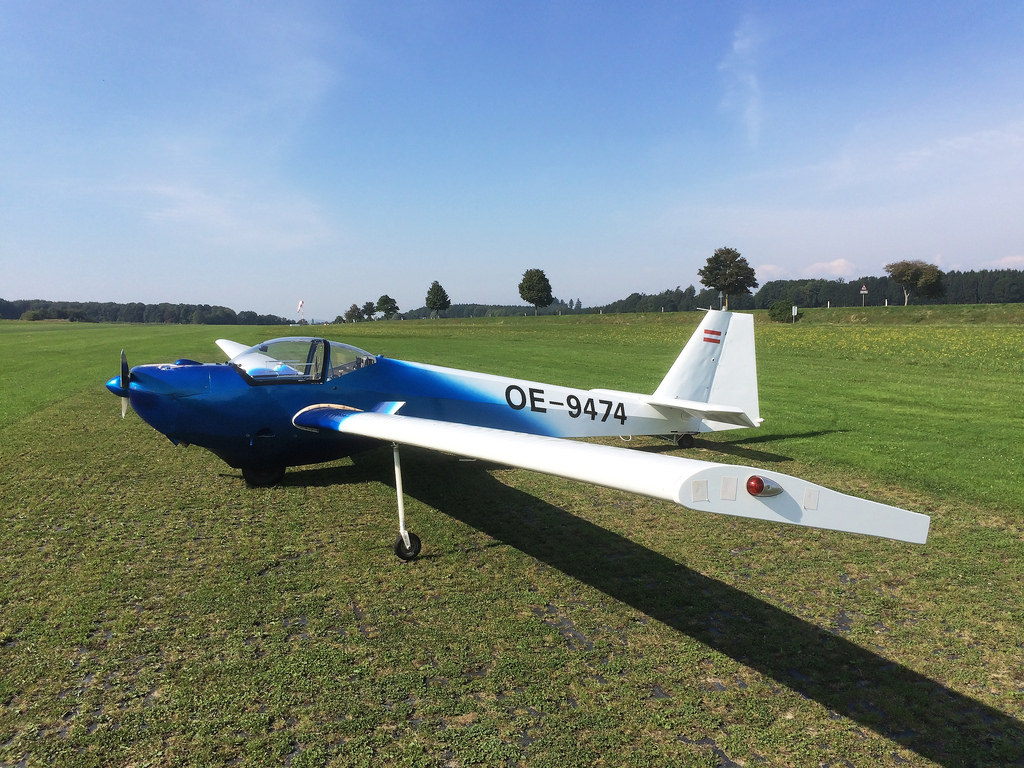This page lists all the various makes and models of gliders that I have flown so far – twenty six planes in total, shown here in reverse chronological order:
- Schempp-Hirth Ventus 3M. In spring of 2024 I took delivery of a new Ventus 3M, an ultra-high performance glider with a retractable engine allowing me to take off unassisted. What an amazing machine! In just a few months I flew more than 200 hours, set a few new state records (declared speed triangles in Colorado over 500km and 750km; and a declared speed triangle in Utah, also over 750km) and flew the greatest free OLC distance ever flown in Colorado at 1286 km. So far all flights have been dry (i.e. without the addition of water ballast). I plan to change that next season to see if this can help me go even further and faster. The engine is very capable, out-climbing any of our field’s tow planes, and has no problem climbing above 13,000 ft, enough to cross any of Colorado’s high mountain passes if needed. Although it is very nimble, responsive, and fast, the glider is extremely easy and forgiving to fly, perhaps even more docile than its predecessor, the Ventus 2. I put a lot of diligence into this decision and have not regretted my choice even once.
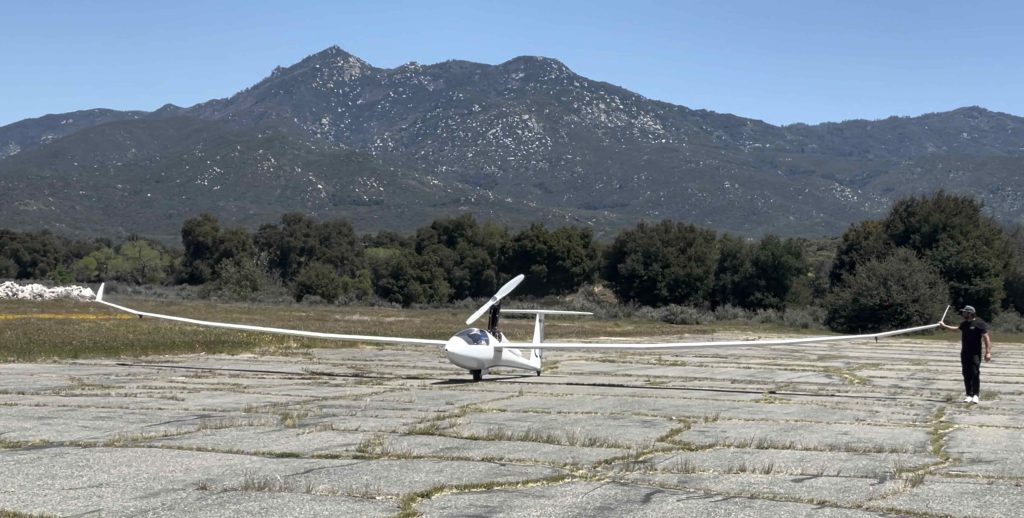
- Schleicher ASG 29. Flying in Château-Arnoux-Saint-Auban I had the opportunity to fly an ASG 29 from the Centre National de Vol à Voile (CNVV) – the French National Gliding Center. I really enjoyed the 29. While my Ventus 2cxT “talks to me more” in the sense that it’s easier to feel every bit of movement, the 29 is exceptionally smooth in the air and essentially flies itself. I also liked the quick acceleration when you put the flaps into negative positions and I found the cockpit to be comfortable (although maybe not quite as roomy as in my Ventus). I slightly prefer the flap handling in the Ventus but it it was quite intuitive in the 29 as well – especially in combination with the quick trim adjustment on the stick. (In the Ventus I tend to keep the trim unchanged during the flight because with my arm length and seating position it is not as convenient to move the adjustment knob.)

- Schempp-Hirth Arcus. In St. Auban, I was also able to fly an Arcus. This is my favorite two-seater so far even though I really enjoyed the ASG 32 as well and the performance of the two is probably equivalent. The reason why I give the Arcus the edge is due to its much lighter handling on the controls. Obviously it isn’t as nimble as a single seater, none of the two-seaters are, but by comparison to the Arcus, the 32 feels like hard work when you want to get it to turn. Once in the thermal, either ship seems to be on rails and pretty much climbs on its own. The 32 has an edge in cross wind on the ground. The high, swept-back wings of the Arcus require that you carefully keep the upwind wing low.
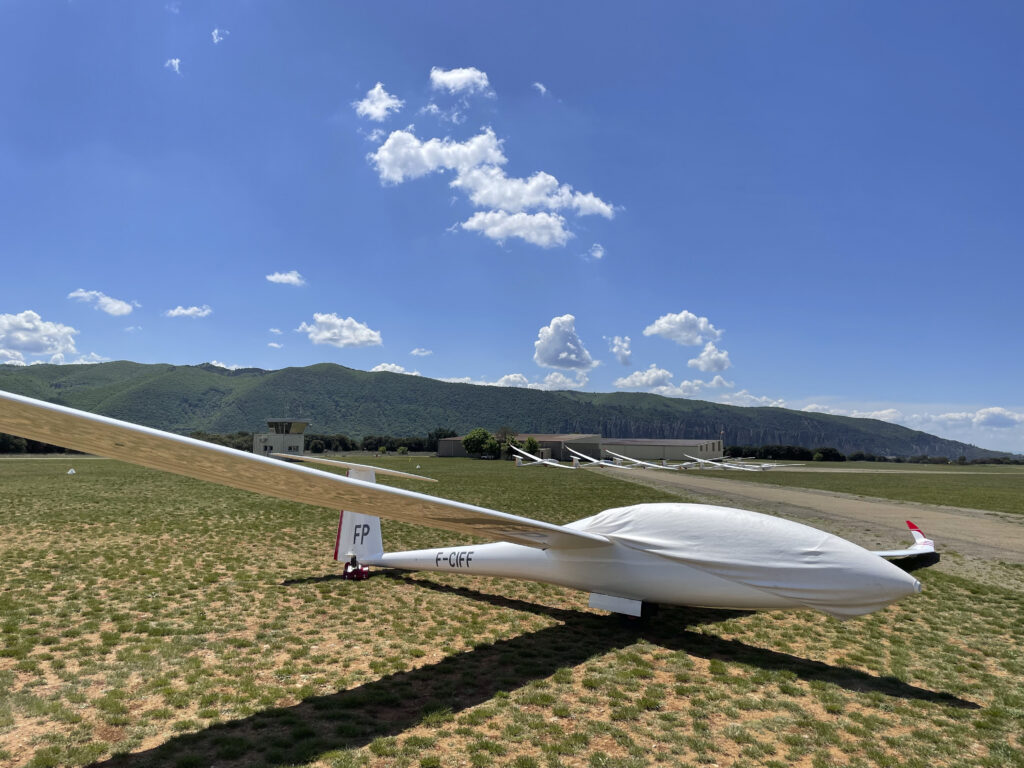
- Schleicher ASG 32Mi. My friend Bill Kaewert invited me to fly with him in his almost new ASG 32Mi in the 20m Two-Seater Nationals in Montague, California. Being relatively new to contest flying we did fairly well and came in 4th place out of eight contestants. The 32 is a great glider. It climbs well and it runs even better. And the Mi is equipped with a self-launch engine. Thanks to Bill and CFIG Alfonso Ossorio I was able to get fully checked out in Bill’s ship and fly it as pilot in command with a self-launch endorsement. In Montague we alternated PIC duties every other day.
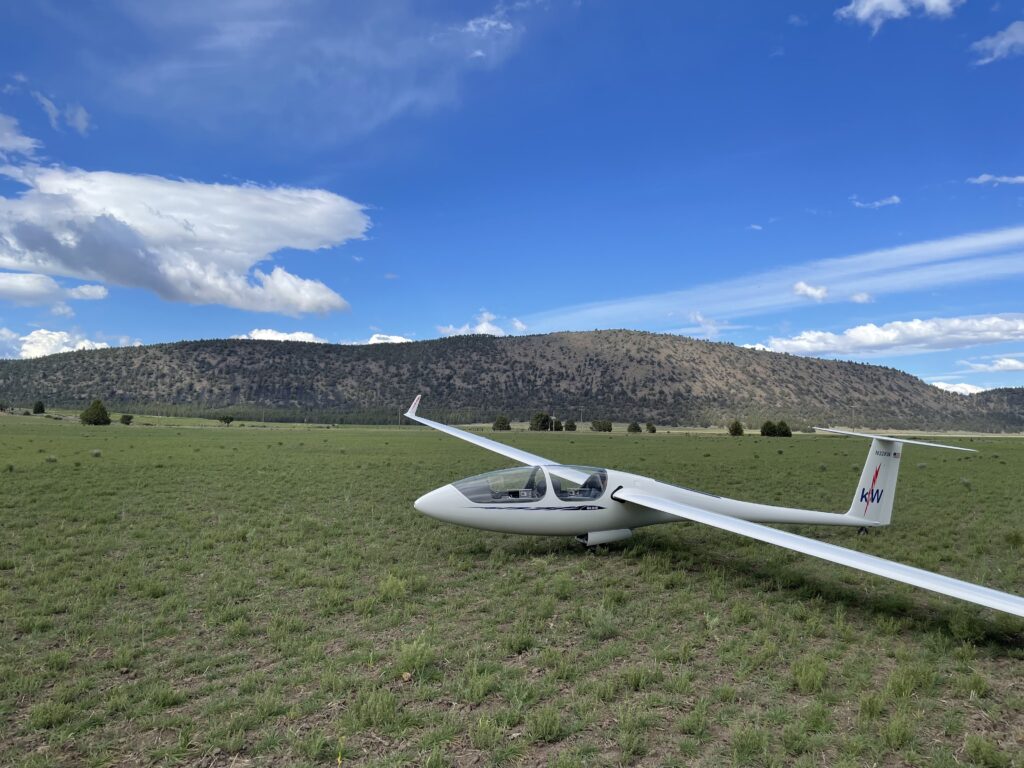
- Schempp-Hirth Ventus 2cxT. The first glider that I purchased for my own use is this flapped 18m high-performance glider with registration number N78FA, serial number 202. The ship has a long-lasting PU paint finish and is in excellent condition. When I bought it, it had flown just over 500 hours. I added another 230 hours in my first year of ownership, completing my 750km Diploma and my first flight over 900km. It’s the ideal glider for an ambitious pilot trying to get into serious cross-country flying. It runs almost as well as a JS3 and its climb-performance is exceptional and requires very little control input. When you’re trying to center a thermal you can simply feel the lift – it’s almost as if the glider would talk to you. In addition to being able to compete at a very high level, it has a comfortable cockpit and is exceptionally easy to fly. And the sustainer engine is one of the most reliable glider engines ever produced.
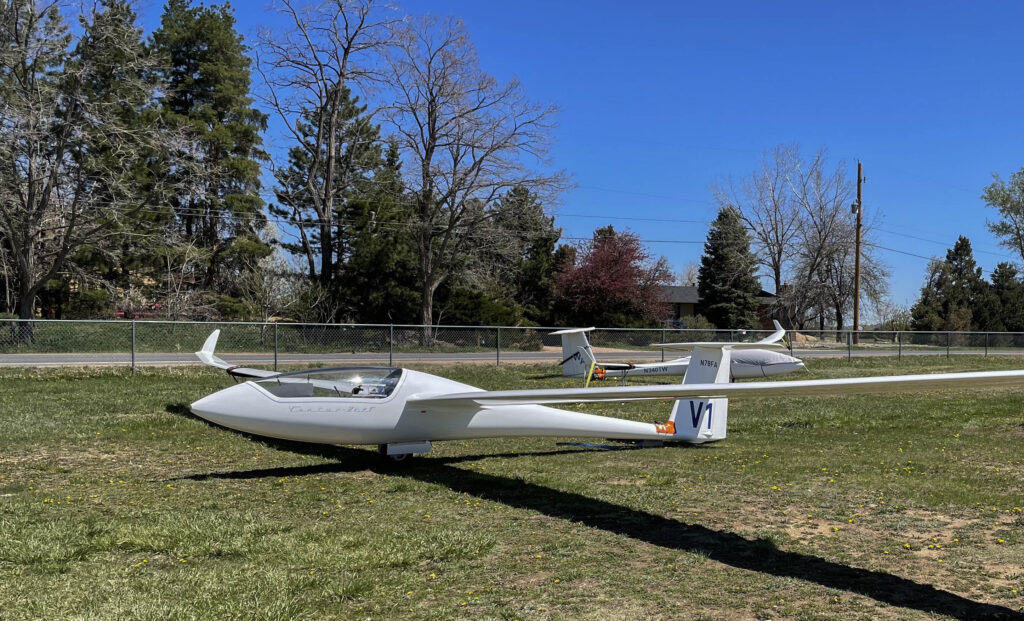
V1 – my current glider – a Ventus 2cxT with sustainer engine - Schempp-Hirth Discus CS. The Soaring Society of Boulder has two well-equipped Disci CS with the registration numbers N23SG (“Sierra Golf”) and N42CA (“Tango Romeo”). First built in 1984, the Discus was the first production sailplane with a swept-back leading edge, now common in contemporary sailplanes. Thanks to a glide ratio of 1:42.5 and strong performance characteristics in fast flight, the Discus dominated standard class competitions throughout the late 1980s, winning the 1985, 1987 and 1989 World Championships. In 2018, I completed my Gold Badge and Diamond Goal flight in N23SG. In 2019, I flew N42CA to Diamond Distance.
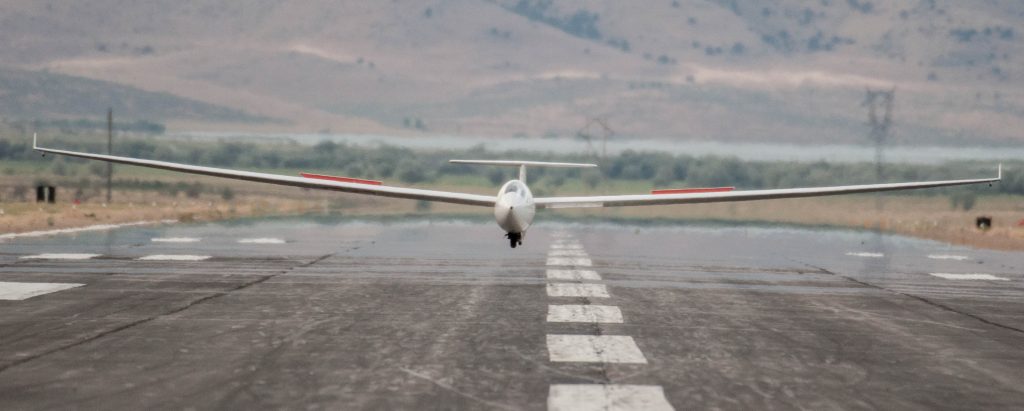
- DG-Flugzeugbau DG 505 Orion. The Soaring Society of Boulder uses this high performance two seater for cross country training. It has a wing span of 20 meters and a glide ratio of 1:44. It’s registration # is N505PB.
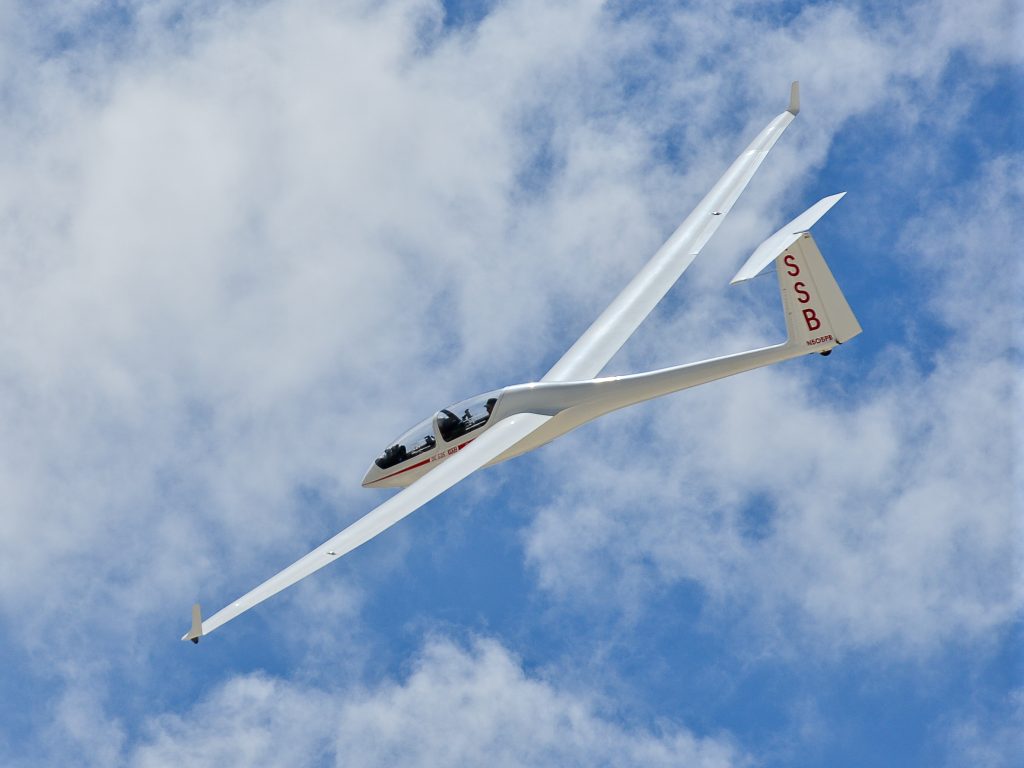
- Schweitzer SGS 1-34. While most sailplanes are built in Europe, this one is from the United States. It is old (from the 1970s) and it looks even older. But it is surprisingly fun to fly. It’s very light so it can fly very slowly, almost as slow as the wooden K8, but obviously it struggles when it comes to penetrating into the wind. The aluminum construction has one other big advantage – it is super resilient when it comes to the element: it can be left outside all year long and extreme temperature swings (which can crack the gel coat on the wings of fiberglass gliders) are a non-issue. At our club it was used for high altitude wave flights. Unfortunately it was damaged in 2018 in a hard landing. It has since been restored by Mile High Gliding and is once again available to fly. The registration number is N-134BC.

- Schleicher ASK 21. The only ASK 21 I have flown is the one below, owned and operated by the Soaring Society of Boulder. It was built in 2013 and is in top condition. Registration # N421EF

- Rolladen-Schneider LS4b. Built for the first time in 1980, the LS4 became one of the most popular gliders of all time with a production run of 1,048 gliders. It is easy to fly and has very good performance. I did my first solo 300 km flight in the plane below.
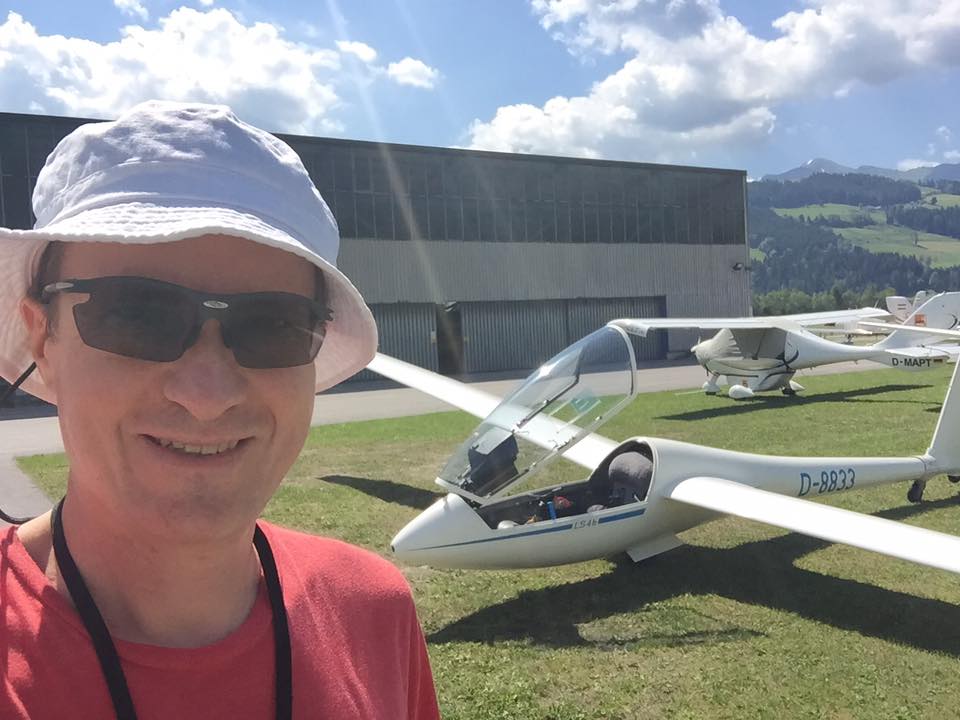
- DG-Flugzeugbau DG 1001. I did some cross-country training with the two seat DG1001 of Alpenflugschule Niederöblarn. And, yes, we did some loops at the end of an amazing six hour flight during which we flew in all forms of lift: ridge, thermal, conversion, and wave – up to 14,000 ft, of course with clearance from air traffic control – as required in Austria above 12,500 ft :-). I also got to fly the ship again in 2018.

- Schempp-Hirth Duo Discus. A few years ago, I took two cross-country training flights with an instructor in Minden, NV. One of those took us high into the Sierra Nevada wave and enabled a high-speed out and return to Mono Lake, CA.
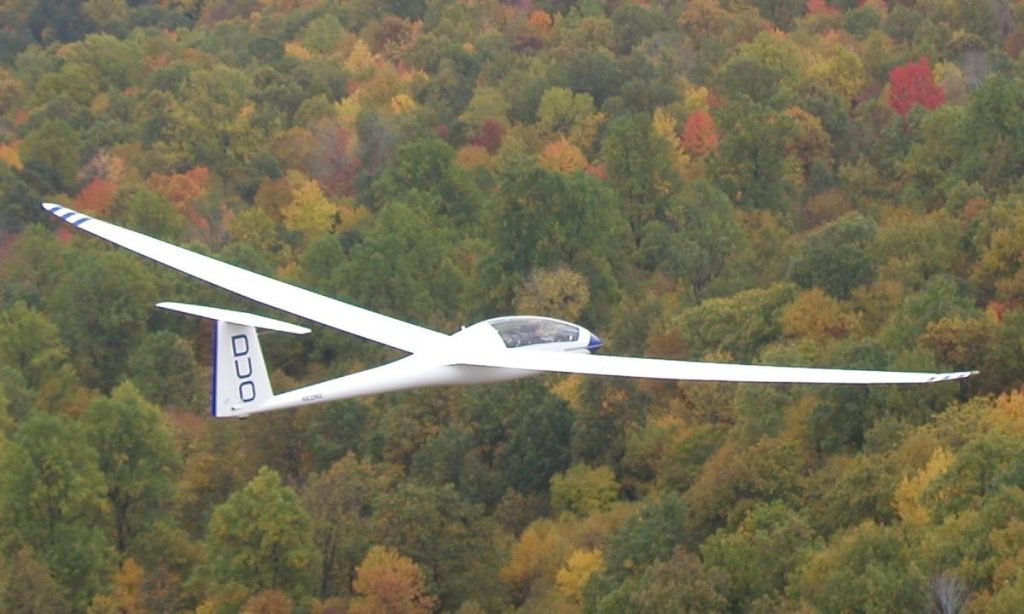
- Grunau Baby 2b. Possibly the coolest plane I have ever flown was a Grunau Baby operated by the airport in Timmersdorf, Austria. It was only one brief flight as part of a target landing competition – where I placed 4th among thirty or forty pilots ;-). Flying in an open cockpit with hat and goggles is quite special. Also, I will never forget the aero tow behind a Robin DR400. The Grunau Baby has a max. tow speed of 90 kph which happens to be about the minimum speed at which the Robin will fly (actually its 87 kph). I remember that I had to push the stick all the way forward to stay level behind the towplane.
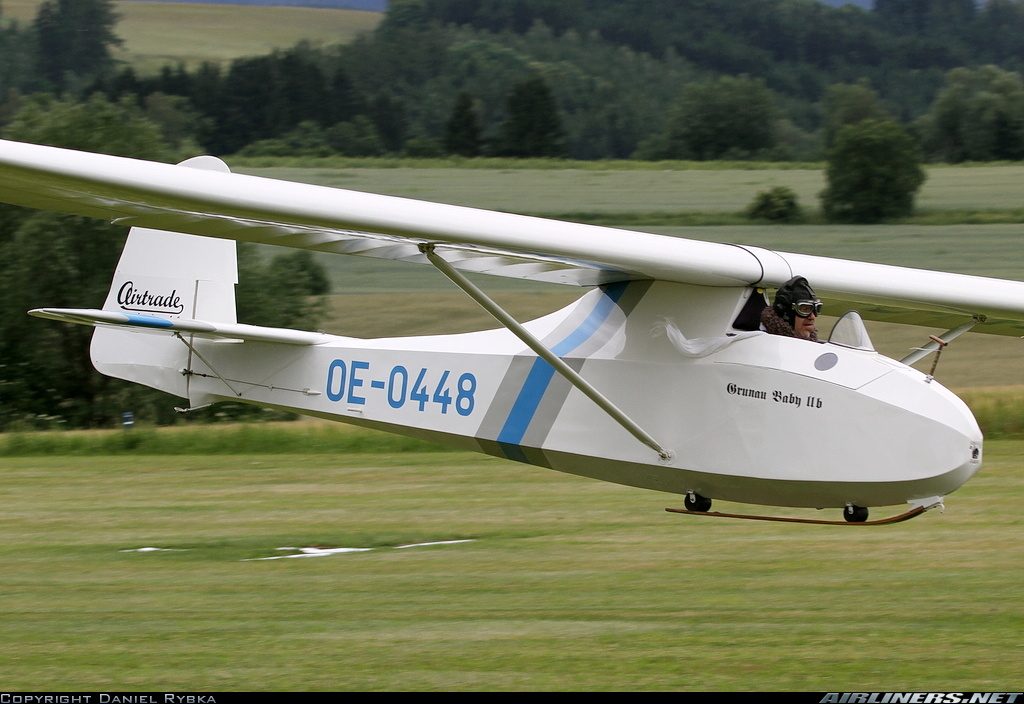
- Schleicher K8. The K8 or Ka8 has been the standard single place wooden trainer since the 1960s. First built in 1957, the total production run was over 1,100 planes, many of which are still in regular operation today. The plane is very easy to handle, and, because it is very light, it can fly slowly and turn in very narrow thermals, thereby often out-climbing much more expensive and higher performance ships.
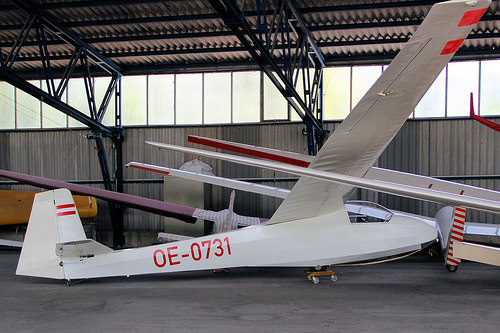
- Schleicher K7 Rhönadler. The K7 or Ka7 is a two seater wooden school plane that was first built in 1960 and was later superseded by the ASK 13 and then the ASK 21. I completed my initial aerotow training and my initial winch training on K7s. I also got my initial introduction to thermal flying in K7s. Many K7s are still in daily use at flight schools around the world.
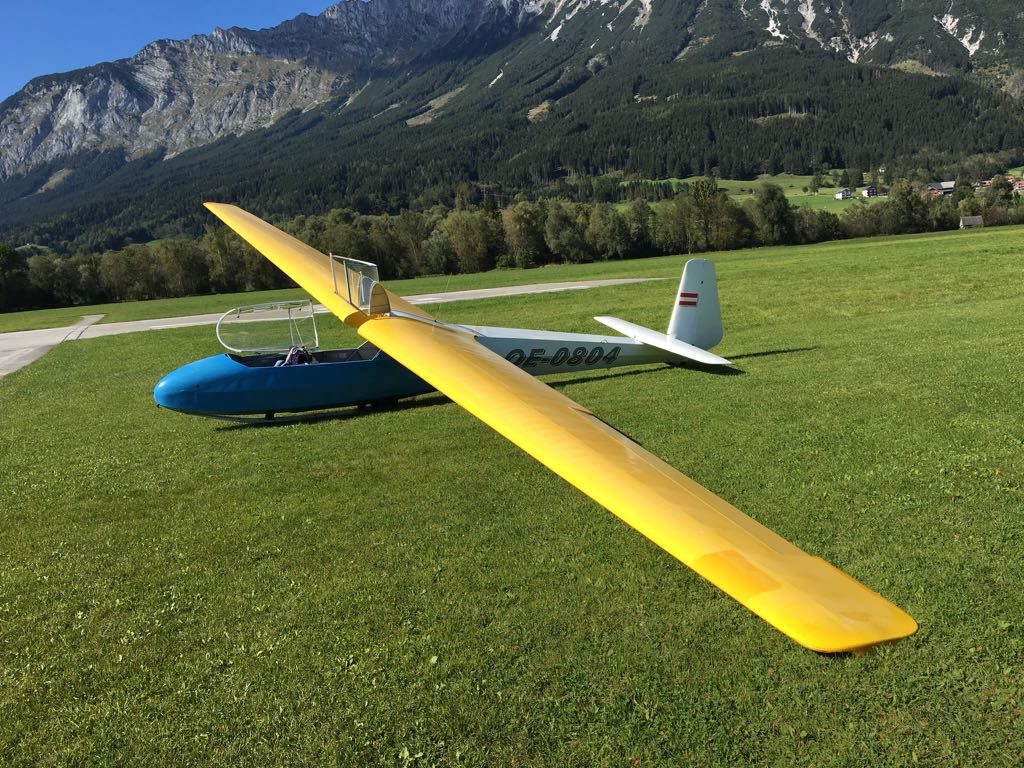
- Scheibe SF25C “Falke”. The first glider I (and many other students) have ever flown is the two seat Falke motor glider. It is reliable and easy to fly but it’s glide performance is so bad that it is only marginally suitable for actual gliding. It comes in handy in flight training where an instructor and student can complete 7 or 8 pattern flights per hour without having to wait for a tow plane. I also completed my self-launch training in a Falke.
